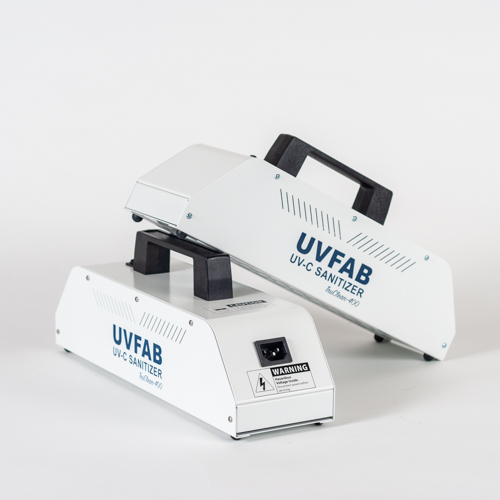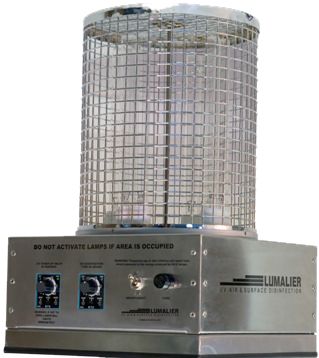Far-UVC UV Sanitizers: An Aggressive Method to Preserving Tidiness and Safety
Far-UVC UV Sanitizers: An Aggressive Method to Preserving Tidiness and Safety
Blog Article
Far UVC Light: A Game-Changer in the Battle Against Airborne Pathogens
In the ever-evolving battle against air-borne microorganisms, the emergence of much UVC light has stimulated substantial rate of interest and potential. What exactly is far UVC light, and exactly how does it work?
The Scientific Research Behind Far UVC Light
The scientific principles underlying making use of Far UVC light as a possible service for combating air-borne microorganisms are both intricate and promising. Much UVC light refers to a particular variety of ultraviolet (UV) light wavelengths, generally in between 207 and 222 nanometers, which have been found to successfully eliminate or inactivate microorganisms such as infections and microorganisms. Unlike conventional UVC light, which has a much shorter wavelength and is recognized for its germicidal properties however can additionally harm human skin and eyes, Far UVC light has actually been revealed to be safe for human direct exposure.
The crucial system behind the effectiveness of Far UVC light depend on its capacity to permeate and damage the hereditary material of microorganisms, including their DNA and RNA. When subjected to Far UVC light, the hereditary material undertakes a process called photodimerization, where nearby bases in the DNA or RNA molecule bind together, protecting against replication and making the microbe unable to duplicate or create infection.

How Much UVC Light Functions
Far UVC light operates by using specific ultraviolet wavelengths to efficiently reduce the effects of bacteria and stop their duplication, making it an appealing option for combating air-borne virus. Unlike traditional UVC light, which is damaging to human skin and eyes, much UVC light has much shorter wavelengths, usually in the variety of 207 to 222 nanometers (nm), that do not permeate the external layer of the skin or the tear layer of the eye. This makes it risk-free for constant human exposure, while still being lethal to viruses and germs.
The efficiency of far UVC light depend on its ability to pass through and ruin the DNA and RNA of bacteria. When exposed to far UVC light, the hereditary material of these microorganisms is harmed, providing them unable to reproduce and infect cells. Additionally, researches have shown that much UVC light can properly suspend airborne infections, such as influenza, measles, and coronaviruses, consisting of SARS-CoV-2, the infection in charge of COVID-19.
Moreover, much UVC light is additionally with the ability of decontaminating surfaces and things in an encased area. By setting up far UVC lights or using mobile much UVC light devices, it is possible to continuously decontaminate the air and surface areas, minimizing the risk of airborne transmission of pathogens.
Advantages of Far UVC Light
Utilizing much UVC light deals a series of substantial advantages in combating airborne pathogens and ensuring a more secure environment for continuous human exposure. One of the key advantages of much UVC light is its capability to successfully counteract different kinds of damaging microorganisms, viruses, and fungis without triggering harm to human beings. Unlike traditional UV light, which can be unsafe to human skin and click to read eyes, much UVC light has a shorter wavelength that permits it to target and damage virus while posturing minimal risk to human health.

Moreover, much UVC light is much safer for the setting contrasted to traditional disinfection approaches. Chemical disinfectants usually include dangerous active ingredients that can have unfavorable influences on the environment. Much UVC light, on the various other hand, does not generate any type of harmful by-products or deposits, making it a more green and sustainable solution.
Applications of Far UVC Light
Among the crucial usages for much UVC light is in the field of air filtration and disinfection. Much UVC light has actually shown to be efficient in removing air-borne pathogens such as fungi, germs, and viruses. This modern technology works by giving off a certain wavelength of light that can passing through the external layers of microbes and harming their DNA, rendering them incapable and inactive to reproduce. Unlike conventional UV light, much UVC light is risk-free for human exposure, making it appropriate for continual usage in public spaces such as schools, medical facilities, and offices.
Another application of far UVC light remains in the medical care sector. It can be used to decontaminate medical facility areas, running theaters, and medical devices, minimizing the threat of healthcare-associated infections. Additionally, far UVC light can be incorporated right into HVAC systems to detoxify the air flowing in structures, offering an included layer click reference of security against airborne virus.
Moreover, far UVC light can be made use of in the food industry to stop foodborne diseases. It can be employed to decontaminate food processing facilities, killing microorganisms and other bacteria that may infect food.
Future Effects of Far UVC Light
The prospective future applications of much UVC light are huge and hold guarantee for various industries and industries. Clinics and hospitals could utilize far UVC light to disinfect individual rooms, running cinemas, and waiting locations, minimizing the threat of healthcare-associated infections.
In addition, using far UVC light in public spaces such as airport terminals, train stations, and shopping center can assist control the spread of air-borne virus. By constantly sanitizing these areas, the danger of transmission could be significantly lowered, supplying a much safer atmosphere for individuals.
Another prospective application of much UVC light is in the food industry. Much UVC light could be made use of to sanitize cooking surfaces, packaging materials, and storage space areas. This might aid protect against the contamination of food and minimize the event of foodborne diseases.
Furthermore, much UVC light could be utilized in HVAC systems to disinfect the air flowing in buildings. This can be specifically valuable in crowded rooms such as theaters, offices, and institutions, where the danger of airborne transmission is greater.
Verdict
Finally, much UVC light has actually become a game-changer in the fight against airborne pathogens. Its unique properties and capability to securely eliminate infections and germs make it an appealing solution for numerous applications. From public spaces to health care setups, much UVC light deals countless advantages in lowering the transmission of illness. With more research study and growth, its extensive execution might have substantial implications for the future of infection control.
Far UVC light refers to a particular variety of ultraviolet (UV) light wavelengths, commonly between 207 and 222 nanometers, which have been found to properly eliminate or suspend look at more info microbes such as microorganisms and viruses. far-uvc. Unlike standard UVC light, which has a shorter wavelength and is recognized for its germicidal homes but can additionally harm human skin and eyes, Far UVC light has actually been shown to be secure for human exposure
Unlike standard UVC light, which is dangerous to human skin and eyes, far UVC light has shorter wavelengths, generally in the array of 207 to 222 nanometers (nm), that do not pass through the external layer of the skin or the tear layer of the eye. Unlike conventional UV light, which can be unsafe to human skin and eyes, much UVC light has a shorter wavelength that allows it to target and damage pathogens while presenting very little danger to human health.
Unlike conventional UV light, much UVC light is risk-free for human direct exposure, making it ideal for continual usage in public rooms such as institutions, medical facilities, and offices.
Report this page